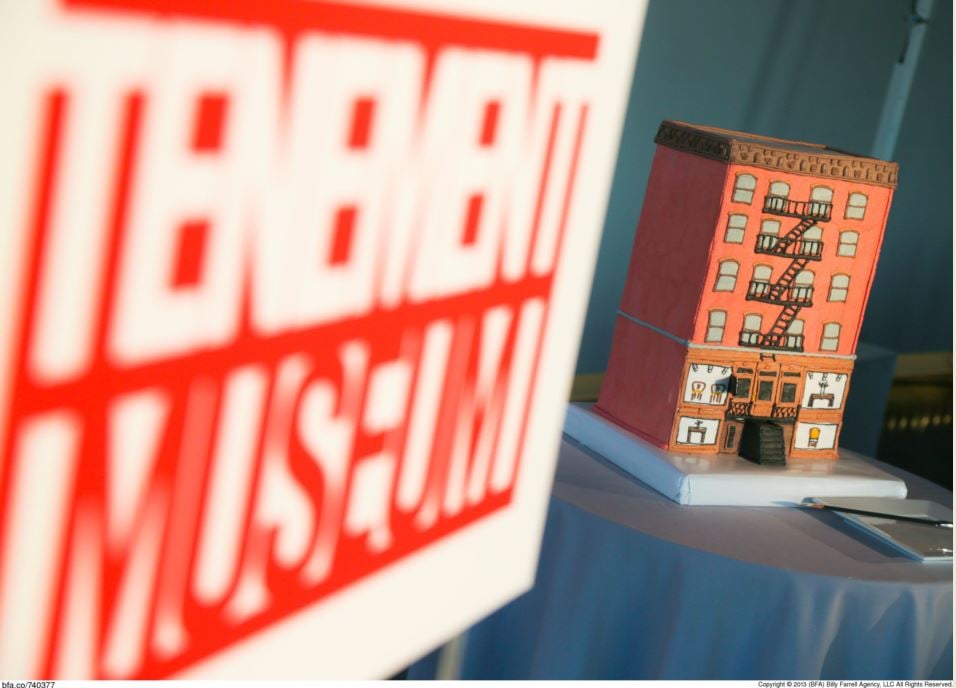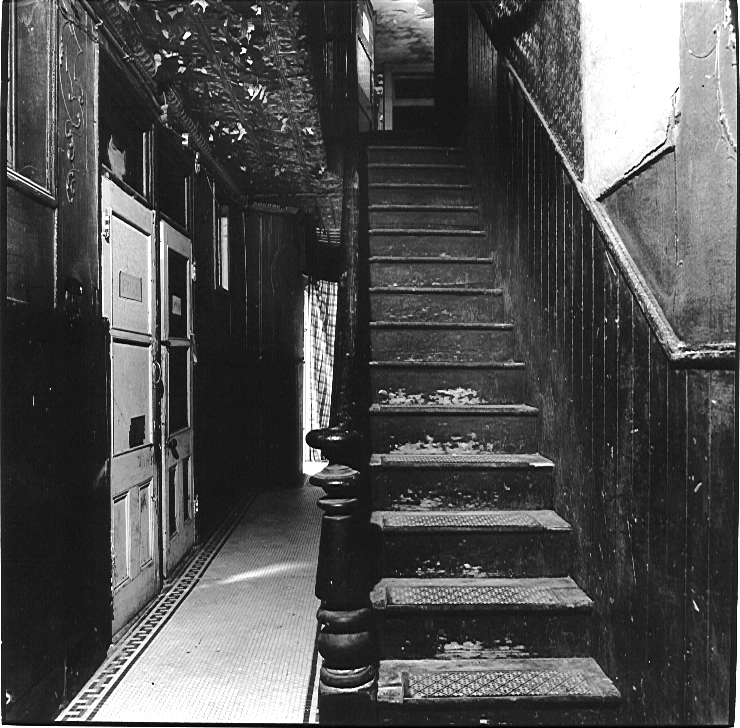Blog Archive
150 Years of Storytelling
2013 is a big year for the Tenement Museum; not only are we celebrating 25 years as a museum dedicated to telling the stories of the everyday people and modern America on the Lower East Side, but our historic tenement building at 97 Orchard Street is turning the big 1-5-0 this month! Well… we think so, anyway.
Perhaps because record keeping in 1863 was a little sketchy, or because this building was not unusual (but it’s very special), the museum has few records about the construction of the building. While we do know that German immigrant Lucas Glockner purchased the lot in February of 1863, Tenement Museum researchers do not have an exact date as to when residents moved into the building, though we now think that it must have been no later than October, 1863. (Only 8 months after Glockner bought the lot – that sure is some quick construction!)
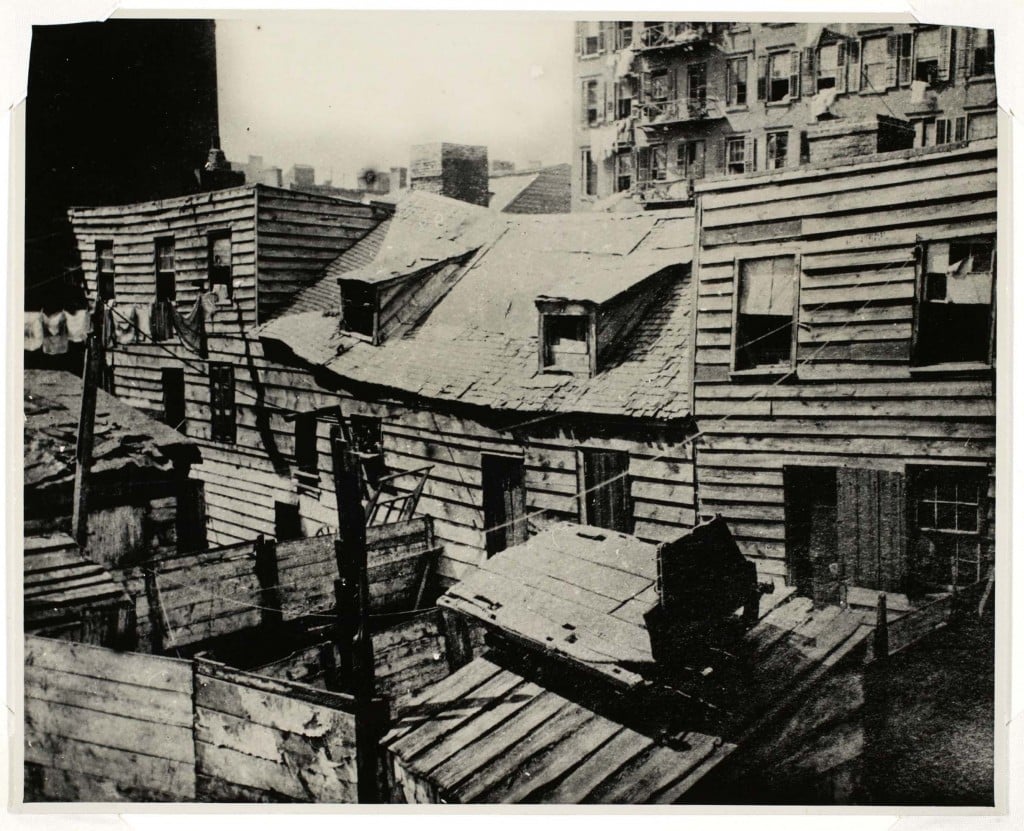
Before tenement buildings, manyworking-class families lived in wooden houses like these, photographed by Jacob Riis.
Few records of the first inhabitants of 97 Orchard exist outside of official documents like immigration reports, censuses, and birth and death certificates; these papers are where we get a lot of information about them.
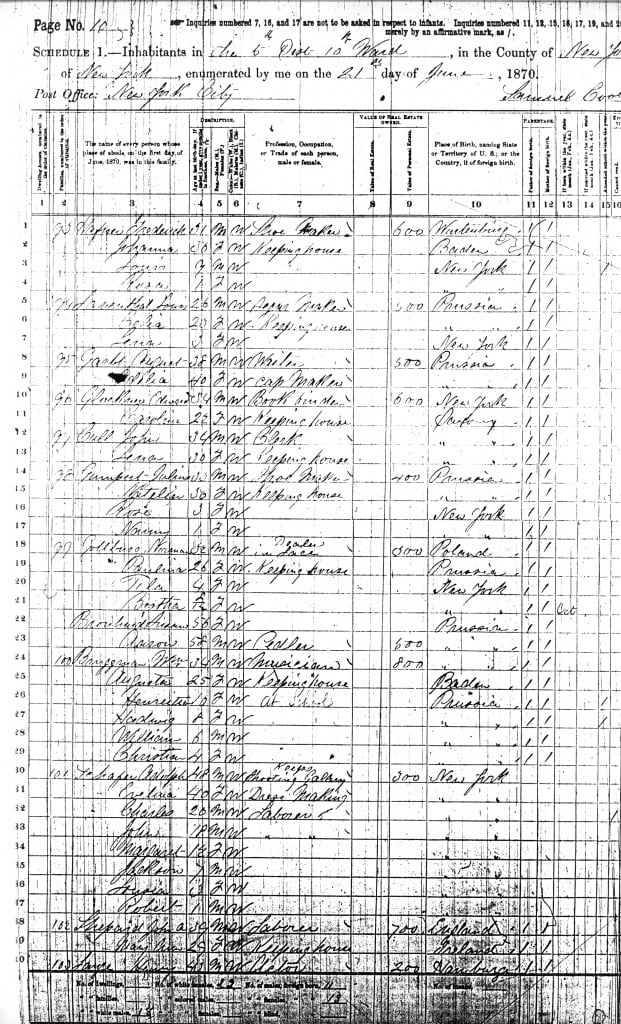
A section of the 1870 census, listing names, occupations, and places of birth of people in the Lower East Side
The first record we have that proves without a doubt that people lived in the building is from October 20th, 1863, when six month old New York-born Eliza Berklie died of marasmus. We have no information about her parents or siblings; we do not know from where they came (though they had lived in the United States for at least six months) or where they went after Eliza’s death. We have no record of what caused Eliza’s death, but like Agnes Moore, who would also die of marasmus in 97 just six years later, we can cautiously assume that the disease, which is caused by extreme malnutrition, was the result of drinking contaminated or adulterated cow’s milk, which killed an estimated 8,000 children a year in the late 1850’s.
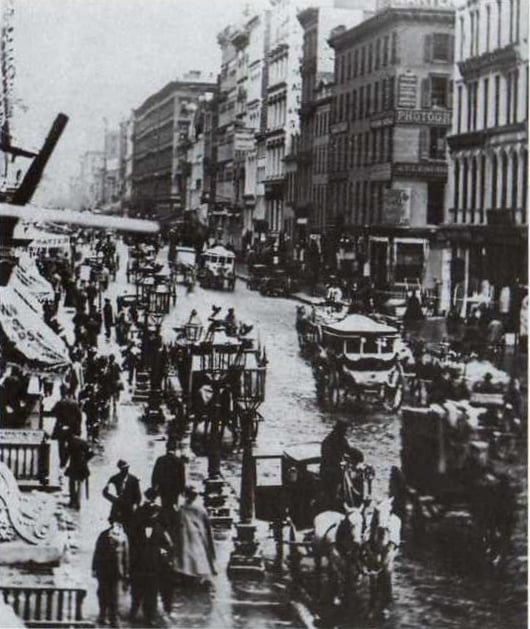
A view of Broadway in 1860. In a time before food regulations, people often diluted fresh milk with water or sold "swill" milk, or blue milk from sick cows, that they whitened with chalk and other chemicals. The diseases that the milk caused lead to thousands of deaths.
It is not a happy occurrence that clues us into exactly when residents lived in 97 Orchard Street, but it should serve to remind us that life inside these tenements was not optimal, nor was it healthy, but that that families who lived in 97 Orchard deserve to have their stories told, even 150 years later.
So while we’re celebrating 150 years of our building which was never supposed to live this long, we’re also celebrating the story of immigrants, New Yorkers, Americans, and citizens of the world, and redoubling our passion for revealing the past and challenging the future.
– Posted by Lib Tietjen
